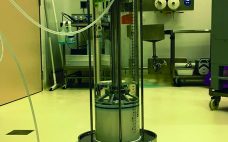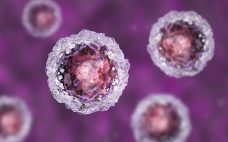One of our annual tasks as a publication staff is to develop next year‚Äôs editorial calendar. How well are we anticipating new directions in research, development, and manufacturing? Are we including interesting and forward-thinking topics ‚ÄĒ or relying too heavily on frequent, overintroduced themes? We have seen an overall generational change in conference attendance and our reading audience. So we also ask ourselves whether we are correctly assessing information needs and providing accessible levels of detail. It‚Äôs not a perfect…
Search Results for: regenerative medicine
Bioprinting Capabilities and Futures
Bioprinting has advanced rapidly through engineering step changes in the use of three-dimensional (3D) printing. With these developments, living cells can be positioned layer by layer to produce functional tissue structures. Key attributes of this emerging technology are its high scalability and modularity, which enable automated and repeatable manufacture of a wide variety of tissues. These high-throughput biofabrication capabilities equip companies with tools to develop 3D-printed tissues for broad applications, from in vitro drug testing models to therapeutic tissue implants,…
Adenovirus Downstream Process Intensification: Implementation of a Membrane Adsorber
Historically, companies developing vaccines have used attenuated pathogens, inactivated infectious agents, or antigenic constituents purified from pathogenic sources. In the past 20 years, technological advances such as recombination and viral vectors, have enabled development of vaccines against diseases with previously no available treatments (1). Viral vectors have become one of the most rapidly evolving and promising fields in vaccinology and regenerative medicine. In addition to preventing infectious disease, they have a broad range of potential applications, including treatment of hereditary…
Technology Highlights from the 2019 BioProcess International Conference
This year‚Äôs BioProcess International Conference and Exhibition, held 9‚Äď12 September 2019, hosted nearly 200 exhibitors showcasing technical innovations for the biopharmaceutical industry. This year‚Äôs conference sessions also included daily technical workshops detailing supplier solutions and technologies. Below are some notable technologies featured that demonstrate the industry‚Äôs dedication to finding new ways to help manufacturers shorten time to market. Most systems offer the benefits of single use, integration, process control, economies of scale, automation, and closed-system processing. Upstream Production The exhibit…
Novo Nordisk and bluebird to develop ‚Äėonce and done‚Äô hemophilia gene therapy
The three-year collaboration will use bluebird bio‚Äôs mRNA-based megaTAL gene editing technology to develop a one-off therapy for patients with hemophilia. Novo Nordisk has had a longstanding focus on the hemophilia space. The Danish drugmaker has marketed several replacement factors for hemophilia patients and has a monoclonal antibody in Phase II studies: Concizumab, a Tissue Factor Pathway Inhibitor (TFPI) intended for bleeding prevention after subcutaneous administration. But a partnership announced this week with regenerative medicine firm bluebird bio will look…
Astellas ups MA cell therapy presence with $13m incubator investments
The support of two biotech incubators operated by LabCentral is the latest investment by Astellas Pharma in the Massachusetts cell and gene therapy landscape. Of the $13 million (‚ā¨11.9 million) investment, $12.5 million will be pumped into a facility being developed by LabCentral in Cambridge, Massachusetts, set to house a lab space for start-up companies to conduct process development studies and a non-GMP pilot plant for cell and gene therapies. The rest of the investment will see Astellas become a…
In the pipeline: Surge of cell and gene therapies likely in 2020
Over 20 cell and gene-based therapies are expected to be filed or to receive approval decisions over the next 18 months, according to the Alliance for Regenerative Medicine (ARM). Earlier this year, the US Food and Drug Administration (FDA) laid out its action plan to deal with the large upswing in the number of investigational new drug (IND) applications for cell and gene therapies it is receiving. ‚ÄúThe FDA commissioner has anticipated that he thinks there will be between 10-20…
Zolgensma data: ‚ÄėHeavy-handiness‚Äô of FDA a warning to industry, not just Novartis
The US FDA may have made an example of Novartis in the way it handled the revelation of Zolgensma data manipulation, says the Alliance for Regenerative Medicine. A month after the US Food and Drug Administration (FDA) approved the one-time gene therapy Zolgensma (onasemnogene abeparvovec), marketing authorization holder Novartis alerted the agency to a data manipulation issue that impacted the accuracy of certain data from product testing performed in animals submitted in the biologics license application (BLA). In its response,…
FDA warns another unapproved cell therapy firm
The US FDA has slammed a self-described regenerative cellular therapy manufacturer for selling unapproved umbilical cord blood and umbilical cord products. California-based Stemell describes itself as an ‚Äúorganization dedicated to leadership, education, service, research and manufacturing of regenerative cellular and cell-free products,‚ÄĚ making products StemL UCB-Plus and StemL UCT-Plus, derived from human umbilical cord blood and umbilical cord, for allogeneic use. However, in the latest example of a crackdown on unapproved stem cell therapies the firm has been at the…
Vertex looks to stem cell islets for diabetes in $950m ‚Äėtoolbox‚Äô deal
Vertex has acquired Semma Therapeutics adding a program using pluripotent stem cell-derived islets as a potentially treatment for type 1 diabetes. While Semma is yet to have brought a therapy into the clinic, the Massachusetts-based firm has created a process it claims can produce stem cell-derived islets (SC-islets) starting from human pluripotent stem cells capable of developing into any cell type in the body. Its lead candidate has completed preclinical proof-of-concept studies demonstrating evidence of the potential of such technology…










